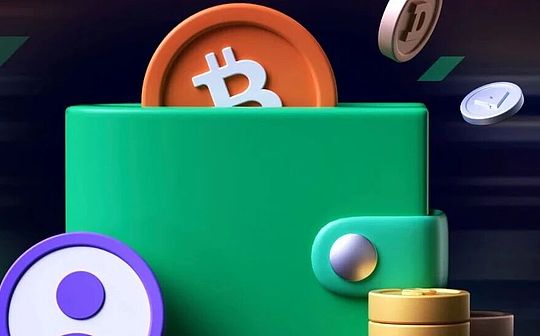
Author: Jack Inabinet, Bankless; Compilation: Deng Tong, Bit Chain Vision World Realm
Non -EVM networks like Solana have become the forefront of the consciousness of the encryption industry in recent months and become potential Ethereum killers, but even Ethereum’s most firm hatred can not deny that the virtual machine of the chain is established by the virtual machine of the chainStrong network effect: EVM chain accounts for 93%of all TVL.
Many critics in the Taifang have reasonable concerns about the ROLLUP -centered road map, which often destroys liquidity and makes the user experience complicated.Instead, they advocate adopting the overall expansion method to unify the network into a single state.
Although some Ethereum split (such as BNB) reduces the demand for rollup by adopting a more centralized consensus mechanism (such as an authoritative certificate) and solve the restrictions on EVM scalability, it is still that the future of finance will not be in the future.Centralized chain.
If the blockchain wants to have the opportunity to become the next Ethereum killer, it must meet the needs of today’s users and developers. At the same time, it must make significant improvements to the old EVM from a technical perspective, and retain the powerful decentralized characteristics.
Monad is one of the most promising chains that meet this requirement.Today, we will outline what Monad brings and discuss why the chain may replace Ethereum as a cryptocurrency -led smart contract platform.
What is the key technological innovation of Monad?
Monad retains complete EVM compatibility, but has improved through four key innovation pairs: MonadBFT, delayed execution, parallel execution, and MonadDB.
Each innovation is an optimization of Ethereum. When combined, the end result is a blockchain with Ethereum bytecode compatibility.The block is 1 second and has the ultimate nature of a single slot.
1.monadbft
MonadBFT is the high -performance consensus mechanism of the chain. It is a modified version of the HotStuff. The two rounds required to verify the communication between nodes and block leaders will be reduced to three rounds.
In order to reach a consensus on the new block, Monad’s block leader will send a certificate to the verification node of the network to prove that the previous block is valid (or timeout). Verifying nodes can send signatures to the leaders of the next block by directly sending signatures to the next block leader.”Yes” to approve the block and start to restart the process.
If the leader isout the time when the verification node cannot reach a consensus, Monad will return to the secondary communication. This is a more time -consuming alternative that requires mutual communication between all verification nodes.
2. Delayed execution
In Ethereum, transactions must be executed first, and then the network can reach consensus and consensus on the trading list and network status contained in the block.
This example only retains very little time to execute transactions in a given block, because most block time is retained for multi -round cross -global communication required to reach consensus.
By delaying execution, Monad will execute decoupled with consensus, and allows the chain to reach the state before knowing whether all transactions in the block have been executed, so that the execution can be performed throughout the block!
3. Pay in parallel
The existing EVM blockchain must execute transactions in order (that is, one by one), and chains that can execute trading in parallel, such as Solana, can handle multiple transactions without common dependencies at the same time, thereby increasing speed!
The blockchain that can handle the transaction in parallel can operate the virtual machine by allowing the virtual machine to run on multiple cores and threads of the CPU of the verification node, and make full use of modern computing technology.
However, to implement transactions in parallel, the blockchain must first determine which transactions can be executed independently.Solana solves this problem by required the transaction to specify their access during execution, but it is necessary to create a new virtual machine.
Unlike the state -dependent dependence of the transaction statement, Monad is optimistic that each transaction can be executed at the same time and tries to execute parallel.When the transaction conflicts during the first execution, it will reopen with the updated data to ensure its execution.
Monad uses a static code analyzer to predict which transactions have dependent relationships to avoid wasting time trying to execute transactions with precedent transactions.
4. 4..Monaddb
Ethereum’s client use is different from Ethereum itself, resulting in the unsatisfactory storage solution. One of the data structures is embedded in another type of data structure, and this data structure is in progress.Data rewriting is not supported from time to time.
Due to Monad’s parallel execution of transactions, multiple transactions need to be able to read and write databases at the same time.MonadDB is a custom database used to store its state on the chain. It can achieve this. It provides high -performance and asynchronous access to make the advantages of parallelization!
Can Monad win?
Although EVM is not perfect, there are very few innovations that can be achieved in Ethereum.
Through a series of innovations, Monad fully excavated the potential of EVM, created a high throughput L1 blockchain, and eliminated DAPPS to further develop or audit its code to transplant its own high throughput execution environment.
Because Monad only changes software, theoretically Ethereum can copy its design choices, but this will require a major system reform, which may make the total lock value of billions of dollars on the chain facing the risk of being used. ThereforeThe possibility of implementing these changes in foreseeable future implementation is not much high.
The interoperability between Ethereum and its Layer 2 solution is a long -term work, which has just begun.Before these challenges are overcome, the blockchain that can handle the current cryptocurrency flow load in a unified execution environment will provide a user experience that can be argued as a better user experience, and attract users, developers and capital to its chainAspect occupies the upper hand.
By obtaining ultra -high -performance block space for Ethereum mature application kits, Monad presents a series of attractive characteristic combinations, which may help make it an important chain activity center.








